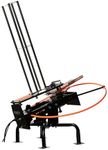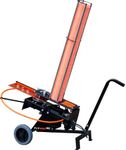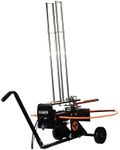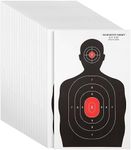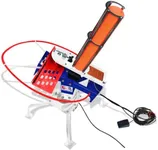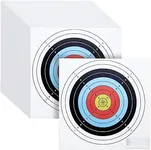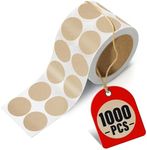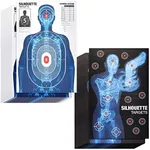Buying Guide for the Best Automatic Trap Thrower
Choosing the right automatic trap thrower can significantly enhance your shooting practice and overall experience. An automatic trap thrower is a device that launches clay targets into the air for shooting practice, and selecting the right one involves understanding various specifications and how they align with your needs. Here are the key specifications to consider when picking an automatic trap thrower and how to navigate them to find the best fit for you.Throwing DistanceThrowing distance refers to how far the trap thrower can launch the clay targets. This is important because it determines the range and challenge of your shooting practice. Throwing distances can vary from short (up to 50 yards), medium (50-75 yards), to long (over 75 yards). If you are a beginner or have limited space, a shorter throwing distance may be sufficient. For more advanced shooters or those with ample space, a longer throwing distance can provide a more challenging practice.
Cycle TimeCycle time is the interval between each throw, indicating how quickly the trap thrower can launch consecutive targets. This is crucial for maintaining a steady pace during practice. Cycle times can range from a few seconds to over 10 seconds. Faster cycle times (2-5 seconds) are ideal for rapid shooting practice and competitive training, while slower cycle times (6-10+ seconds) may be suitable for leisurely practice or beginners who need more time to prepare between shots.
CapacityCapacity refers to the number of clay targets the trap thrower can hold at one time. This is important for determining how often you need to reload the machine. Capacities can range from a few targets to over 100. For casual shooters or those practicing alone, a lower capacity (10-25 targets) may be adequate. For group practice or extended sessions, a higher capacity (50-100+ targets) will reduce the frequency of reloading and allow for uninterrupted practice.
Angle AdjustmentAngle adjustment allows you to change the direction and elevation at which the clay targets are launched. This is important for varying your practice and simulating different shooting scenarios. Some trap throwers offer fixed angles, while others provide adjustable angles. If you want to practice a variety of shots, look for a model with a wide range of angle adjustments. For more specialized practice, a fixed angle may suffice.
Power SourceThe power source of an automatic trap thrower can be either manual, battery-operated, or electric. This is important for determining the convenience and portability of the device. Manual throwers require physical effort to operate, making them suitable for those who prefer a workout or have no access to power. Battery-operated throwers offer portability and ease of use, ideal for outdoor settings without electricity. Electric throwers provide consistent power and are suitable for fixed locations with access to an electrical outlet.
DurabilityDurability refers to the build quality and materials used in the trap thrower. This is important for ensuring the longevity and reliability of the device. Durable trap throwers are typically made from high-quality metals and plastics that can withstand frequent use and outdoor conditions. If you plan to use the thrower frequently or in harsh environments, look for models with robust construction and weather-resistant features. For occasional use, a less durable model may be sufficient.

